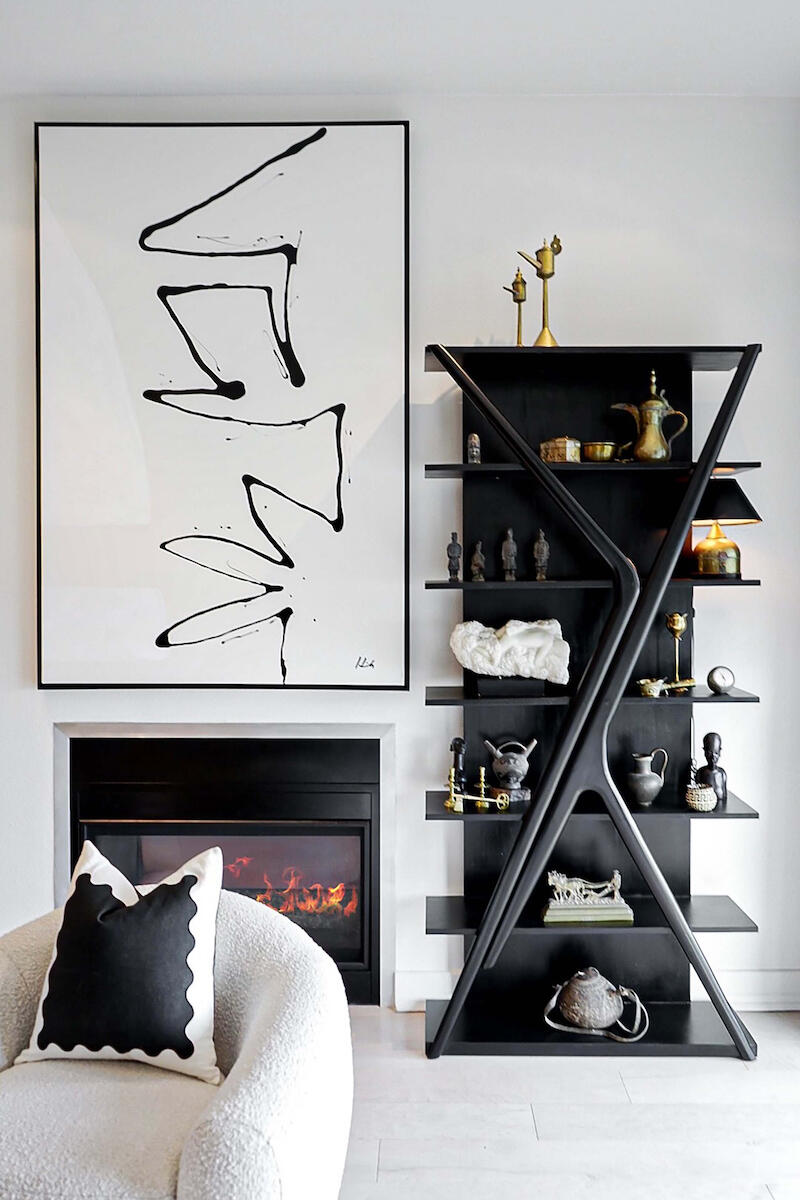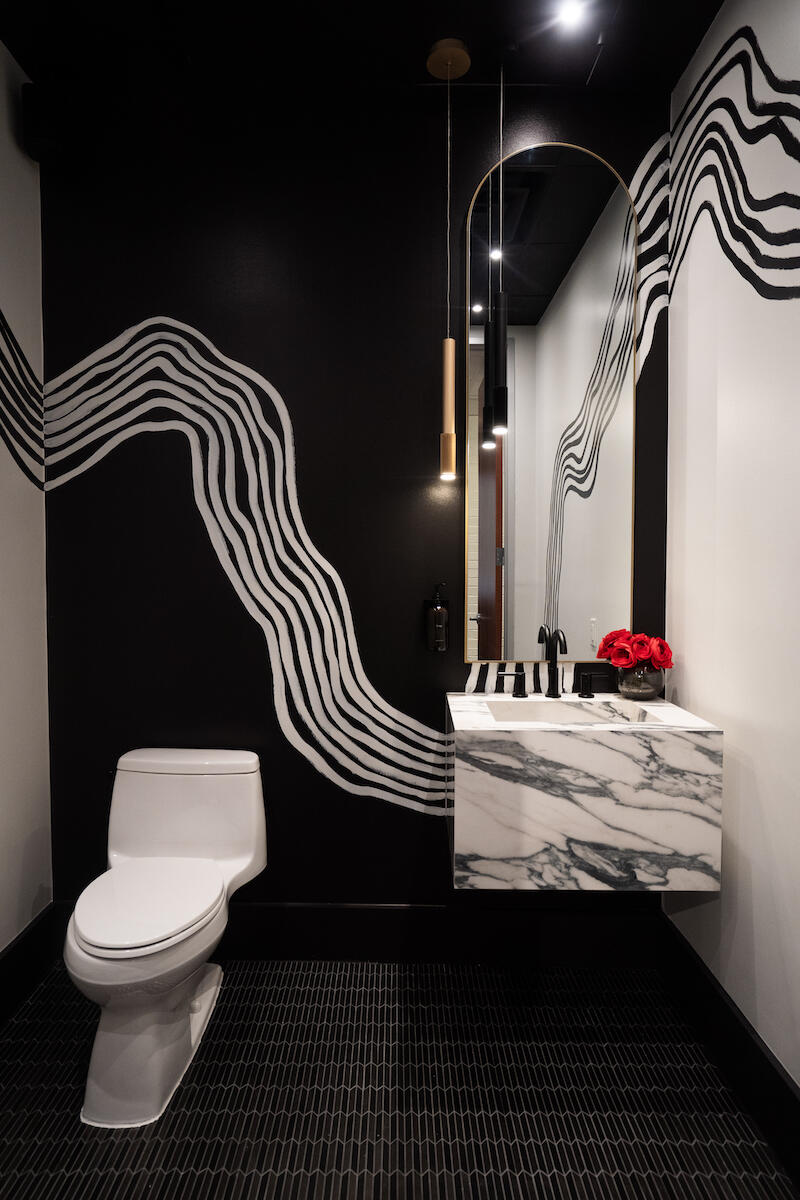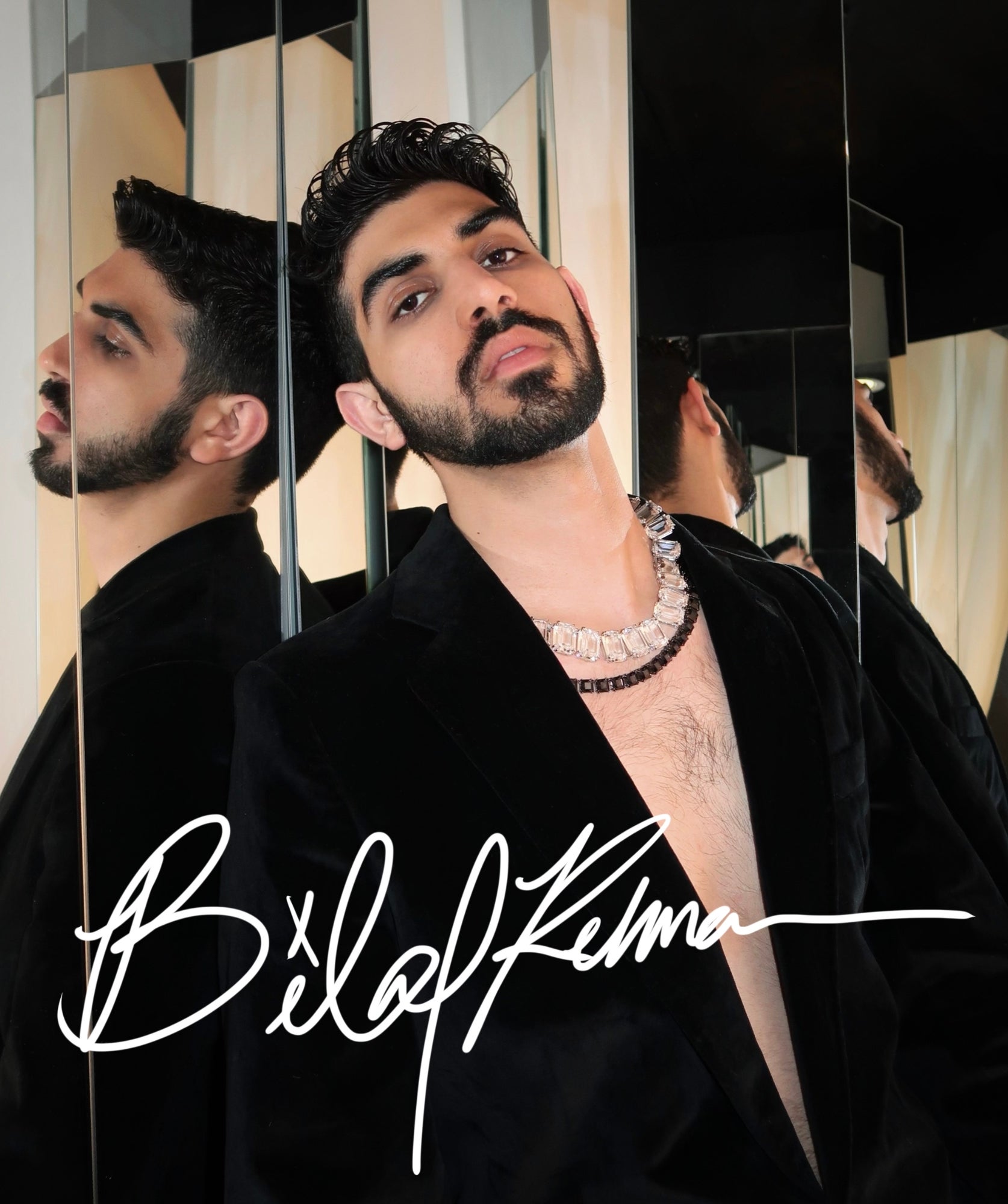In Ask an Influencer, Business of Home explores the creator economy. This week, we spoke with Bilal Rehman, the Houston-based Gen Z designer who became an overnight success on social media after adopting an unfettered approach to creating content.
Given the rate at which Bilal Rehman is ascending through the design world, you’d think his climb has been effortless—it hasn’t. Five years ago, the Houston native was a college freshman majoring in computer engineering (mostly to satisfy his parents) before switching to business, all the while harboring dreams of breaking into design. Desperate to find a foothold, he spent months submitting internship applications and inquiries to firms throughout the city.
“Nobody in the design world wants to hire somebody who has no experience, no portfolio, nothing to show—and I was like 17 or 18 years old, straight out of high school,” says Rehman. “Finally, I landed one and it was a pivotal moment for me. I knew that I really had to make the most of it.”
Throughout college, Rehman worked simultaneously on his studies and at the firm, where he climbed through the ranks each year from intern to project manager, then designer, and eventually senior designer—all before collecting his diploma. By the time graduation rolled around in 2022, he decided it was time to launch his own business. While he didn’t suffer from a shortage of new client leads thanks to his experience, his design-centric social media accounts still lingered around a couple hundred followers. It wasn’t until he recruited his younger sister (then 20) to revamp his social media strategy that his audience skyrocketed nearly overnight—landing today at 138,000 on Instagram and 430,400 on TikTok.
Ahead, Rehman shares the informal approach to creating content that won over his growing audience, why his social media team is now a four-person operation, and how he’s parlaying his online reach into a new platform for undiscovered artists and artisans.
How did you come to launch your own firm?
My design style is not typical to Houston—my aesthetic is very dramatic, very contemporary. I use a lot of black, and a lot of really weird and unique pieces that are conversation starters. I felt like there was a big void in the Houston design world—like everybody had a very similar, distinctive look, and people were [only] exposed to this one look. I decided to branch out on my own and start my own studio to bring a more experienced-based, dramatic design to the Houston design scene, because I felt like nobody here was doing it. I think that is what has allowed us as a studio to grow so rapidly.
Our studio as a whole handles large-scale luxury projects, whether that’s retail or hospitality or residential or restaurants. They tend to be higher-end projects, and honestly I got a little lucky with my first few projects, because I never got the clients who wanted help choosing one paint color on a wall, or a chair for their living room. That was never the kind of clientele that I attracted. But because of how our studio has developed so quickly, with our growth on social media and all of that, we’re actually going to open up a lower-end division that can handle projects that may not be so large-scale—maybe somebody who just wants to do one room of their house or one small office, as opposed to a full-blown project.

When did you launch your design presence on social media?
I’ve been on social media for about four years. I was running my accounts myself for the first three and a half years, and I completely failed. I could not for the life of me figure out how to get more followers or interactions. It wasn’t until four or five months ago that I brought on my sister, who just turned 21—and she is a marketing genius. She pushed me and came up with a new strategy.
What she pointed out—that I hadn’t even realized myself—was that I was trying to portray what a normal idea of a designer is. I wanted to be artsy and feel like—it’s that ego thing—I was above everybody else, and that I wasn’t a normal human and I didn’t cuss. [My content] was so painted out in the ideal image of what everybody thinks the designer is that nobody was able to relate to it. She came up with the idea of, “Why don’t we just make a video where you be yourself. Just talk how you normally talk. Pretend that the camera’s not there and just speak to the world, the way Bilal speaks to the world.” Honestly, it was the most genius thing that she could have ever done, because it was such a pivotal moment for my career, for my brand, for her, for everybody involved, because that is what gave us the platform that we have today.
I have no idea where [my sister’s] ability comes from—it’s her natural calling, and I’m so proud of her. Not every family gets to say that they get to work together, so it’s really cool. Because of her knowledge and her success in the world of social media, we actually decided that Bilal Rehman Studio is now going to open up a marketing division [offering] marketing services to other designers and professionals, and she is going to spearhead it.
Tell me about that first video after you started following the new strategy.
The first video that we made was “3 Ways for Your House to Not Look Like a Piece of Sh-t.” That video launched it all. Basically, [my sister] came in and said, “You know, Bilal, you always have been very opinionated.” Everybody in my life knows this. She was like, “You always have such a strong opinion on things in the design world. Why don’t you show that? Why don’t you just say it for what it is? Tell people the mistakes that they’re making, and maybe it will resonate.” At first, I was extremely hesitant, because I had never done it before. I was like, “Oh, my God, am I going to lose clients now because I’m cussing on camera? Am I going to come off as unprofessional?” Bottom line, she ended up talking me into it. We did the video and posted it, and the video got a million views within the first 24 hours. Prior to that, I had maybe 700 followers; 24 hours later, we were at 100,000 plus.
What did your content look like before and after the switch?
Prior to this new strategy, my content was very staged. I think that’s the best way to say it. For a long time, before I would do a video or a photo, I would set up the space to be absolutely perfect before I took a picture of it, and I would choose music that other designers were using in their videos. It felt so unauthentic, and it did not feel like it spoke to who I was or my aesthetic or my brand. After my sister came on, I did a complete 180. Anybody who watches my videos or goes onto our social media now immediately knows who I am authentically, and understands my personality and my sense of humor and the way that I view the world of design.
How has your following and your business changed since then?
It’s been continuous growth. It doesn’t even feel like we’re building followers, it feels as if we’re building a community. It feels as if people are starting to resonate with me as an individual and starting to feel comfortable enough to send us pictures of their house and say, “Hey, I think I messed up with my bathroom. Can you help me fix it?”

We were also in a really small office, and because of our social media growth, we ended up deciding on a bigger space. I stumbled upon this fabulous building—it’s right on the border of River Oaks and Montrose in Houston—and it was large enough that I was able to split the space and have a full-blown studio, as well as a full-blown gallery. The gallery is not going to be like a typical gallery where you walk in and it feels stiff and unapproachable, and everything costs a million dollars.
My approach was, “How do I make a gallery for the home that is designer-curated to my aesthetic, but still relatively affordable for the majority of people?” What we were looking for on social media is artists and artisans from around the world who make different pieces—whether that’s furniture or lamps or artwork or rugs—and then I would sit there and go through all the portfolios and hand-pick the ones that spoke to my aesthetic. We put a video out [calling for submissions], and I think we have had over 1,000 people submit their work. We only have 50 spots, so we’re being extremely selective.
If I would put a piece in my own home or use it in a project, then it definitely had a green light to come into the gallery. It was also an opportunity for us to support local artists and artisans, and small artists and artisans around the world, because our studio stands for no mass-produced artwork. There are so many amazing creatives in the world; why not give them a platform or an opportunity to showcase their stunning work as opposed to something that’s been printed 100,000 times and put in every department store across America?
Why do you think the new content resonates better with your audience?
I think it allowed people to see a designer in a normal, human setting. It allows people to see that yes, he is a designer, he does projects, he’s expensive, whatever—but he is a normal person. He talks like a normal person. He acts like a normal person. He doesn’t act like he’s above us, just because he’s a designer. I think for the longest time people were having such a hard time relating to designers, and I feel like [my firm was] one of the first to come in and break that mold and show people that it’s OK to say that that shower curtain is ugly, or that couch is s—ty. Don’t buy it. It’s OK to talk that way and behave that way. You can still be successful and still be a professional in an industry by being a normal human being.
What does the process of producing content look like for you?
It has evolved so much. When we first started, it was just an iPhone. As we started to grow, and as the demand for our content grew, we had to evolve our setup to be able to more efficiently accommodate that. Now we have more professional lighting, we have better quality cameras. My sister—she is now our in-house marketing director—doesn’t have scheduling software or anything, so she and her team handle posting on all platforms throughout the day. Honestly, there’s not really a good scheduling software out there—the few that exist are kind of glitchy, or they mess up and they’re unreliable. So we decided that in order to maintain the quality that we want, we wanted to keep a person doing it.
We have microphones and all the equipment that you need to make videos that are quality. My sister comes up with some of the ideas, and we sit together and collaborate on what brands or products we’re going to feature. We have many, many meetings throughout every week. She also has three other people on her team, because every platform is so demanding that it just couldn’t happen all with one person. She was doing a fantastic job by herself for the longest time, but I needed her to get some help before she reached her breaking point. It got intense. Now she has three people—a videographer, an editor and a photographer—so we have all hands on deck when it comes to production.
How much of yourself do you show on social media?
I try to be as transparent as possible, because that’s the way that I see people really being able to relate and connect to the content, so I tend to show everything: my apartment, my relationship, personal moments in my life, like a birthday party or a dinner. It’s 2023—if people cannot connect to you and get to know you through social media, then there’s no point in you even being on social media at this point.
Do you have a separate personal account?
No, just my main account. This was a big conversation when we started to take off: Do we keep my personal account and business account linked as one, or do we separate them? I ended up deciding to keep them as one because I felt like if somebody wanted to get to know me or my brand, they needed to know the entirety of me and my brand, not just a part of it. So I show it all in one place, and they can make their decision from that point, instead of having to go between two or three different accounts to get to know who I am and what I stand for.

How do you field comments and DMs?
My sister looks through the comments section of every post and lets me know if there’s anything standing out that she feels like would either make a good video or be something good to reply to. I go through all of the comments and messages after her, and I try to reply to as many as possible, because I feel like I’ve been in the situation before where I have messaged or commented on somebody who I’m following, and they have a higher follower count, and I send them a message or I comment on their posts, and I never hear back from them. And I hate that feeling—I don’t want people to ever feel like I’m unapproachable or that I’m above replying to their comments. That’s not a good way to make somebody feel like they can connect to you. So I try to reply to all of it. I mean, I’ve gotten some weird comments where I’m like, “OK, I’m not replying to this one.” But the ones that make sense I definitely reply to.
Do you ever encounter trolls?
Yeah, absolutely. The second that you get into the spotlight in any capacity, you’re going to have people who hate you and love you. Especially given the fact that I’m in a subjective profession, where people are extremely opinionated about a certain aesthetic, or my personality is so out there that certain people may not be able to relate or like my personality. There have definitely been some wild comments, but you just ignore those and keep moving on, because for every one bad comment, there’s a thousand great ones.
How has taking off on social media impacted your business?
It has been a lead generator, a marketing tool. This is the easiest way for somebody to get to know me before they meet me. Social media is no longer a luxury—it’s a necessity in today’s day and age. If people feel like they don’t know who you are, or they can’t relate to you, then they’re less likely to want to become a client or want to work with you. If they can’t find you virtually, you’re missing out on 80 percent of your clientele. Everything is online, so our push on social media was, “Let’s put everything out there.” It’s ended up being such an amazing thing, because I used to get some clients who were not a good fit—clients who didn’t vibe with my personality or my aesthetic—and ever since we’ve put so much authentic content out there, it’s made for such better projects and connections with clients.
What are you struggling most with or analyzing about your social media activity today?
I think the hardest thing is not falling into the same box as everybody else. We are fed so much content throughout the day, so we see so much of the same thing. Let’s say one person you’re following has this pair of shoes, and then you see it 10 more times on your timeline, and all of a sudden, now you feel the urge, “Oh, my God, I need those because I’m seeing them everywhere.” For me, it’s important to maintain that authentic element to my social media and not fall into the trap of what everybody else is doing. Sometimes I find myself fighting with that, but I think it’s getting easier as we’re continuously doing it and growing.
How has your life changed since your social media presence took off?
Now, when I go out in public, it’s a little weird because people will recognize me. They’ll come up to me and say, “Oh, my God, are you that guy from TikTok?” Or, “Oh, my God, I saw your video on Instagram.” They’ll ask for a picture or want to talk to me about their space or whatever, and that has taken a little bit of adjusting to because that has never happened to me before. Other than that, my life has just been crazier and busier with work. Every day, another blessing finds its way to us.
Homepage image: Bilal Rehman | Courtesy of Bilal Rehman Studio




























